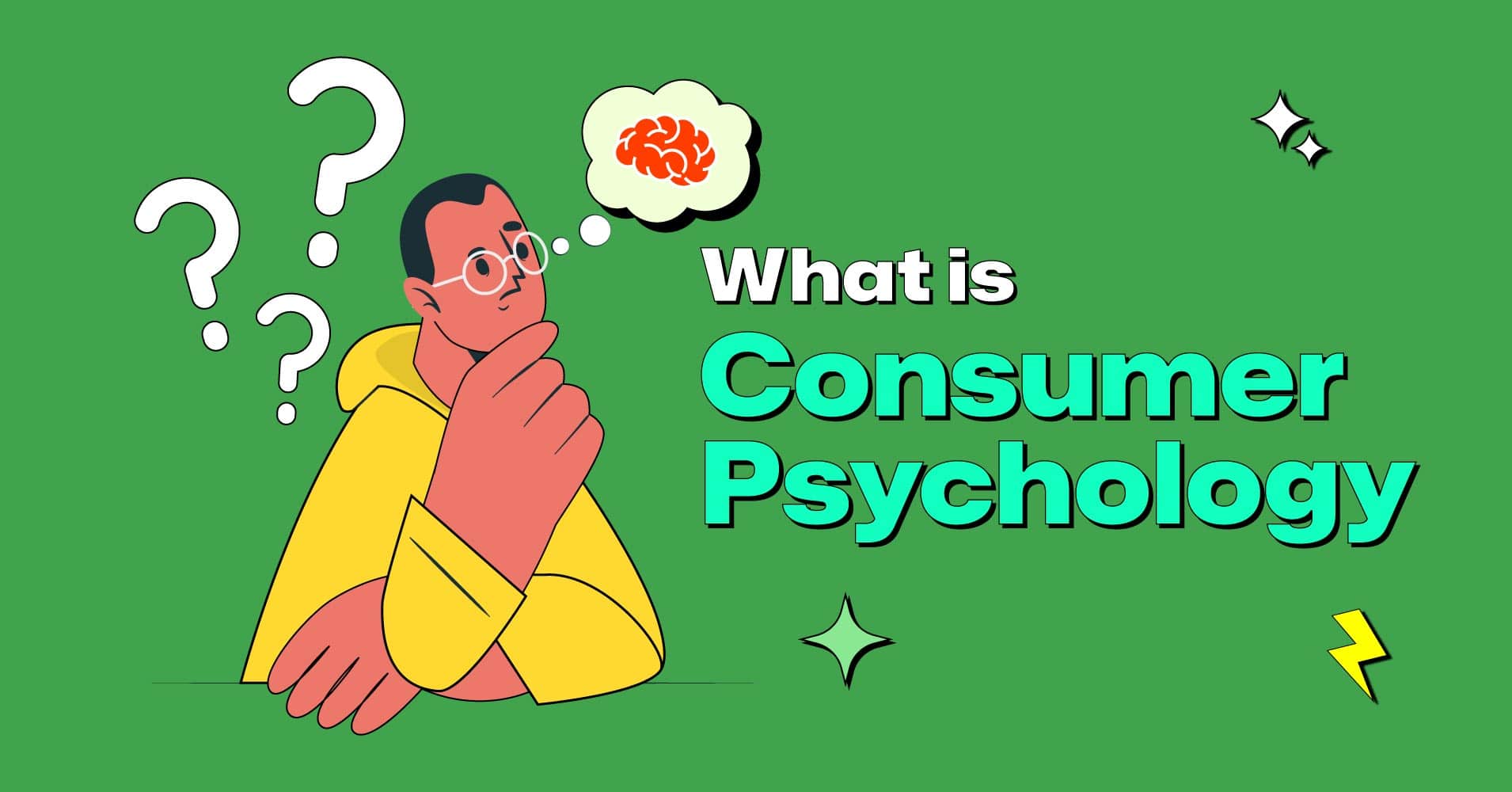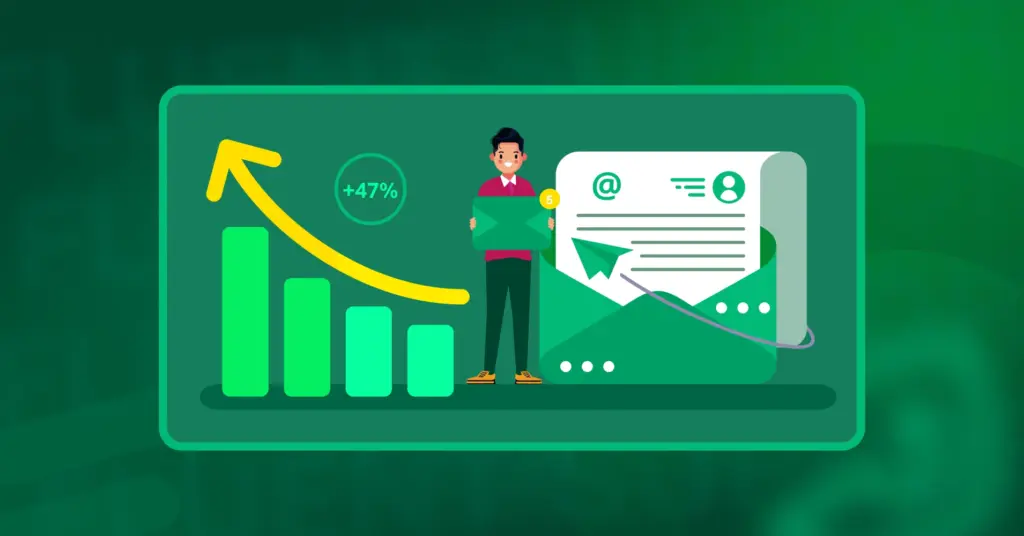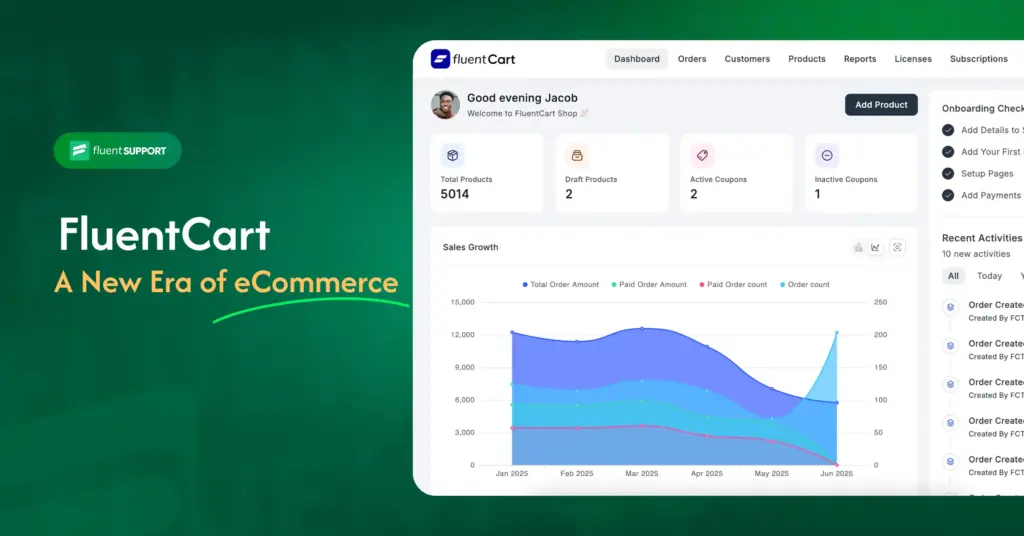
Consumer Psychology: The Secrets For Happier Customers
Do you really know why your customers buy what they buy and skip what they skip? The answer lies within the realm of consumer psychology. A fair grasp of your consumers’ psychology gives you the power to serve better and influence your customers.
If you know how your customers react and interact with your business, it becomes easier for you to improve your products, support, services, marketing strategies, and so on. To be more accurate, an insight into consumer psychology will help you with,
- Customer segmentation
- Customer retention
- Relevant marketing
- Trends prediction
- Outsmarting competition
- Customer service
and so on.
So, in this blog, we will shed light on this common yet very dynamic subject to help you make the most out of your business. Excited to learn? Let’s go!
What is consumer psychology?
Consumer psychology is the study of why people make certain decisions as customers. It examines various social, emotional, economic, and cultural factors that effect their buying behavior.
Also, it analyzes and shows patterns in the psychology of consumers. Therefore, businesses can quickly learn from these insights and optimize them into their businesses accordingly.
For example, have you ever noticed how certain smells or sounds can trigger memories or emotions? That’s also consumer psychology at work. By tapping into the sensory experiences of customers, businesses can create a more memorable and engaging customer experience.
According to Mood Media, “Intersport saw a 26% sales increase in the football category after installing scent in the test store, compared to other stores in the country.” This highlights the importance of utilizing sensory marketing in business operations.
Businesses can use various techniques to engage customers’ senses. For example, using pleasant scents in their stores or play calming music in their waiting areas. By creating a positive sensory experience, businesses can increase customer satisfaction, boost sales and brand loyalty.
Thus, by utilizing consumer psychology, businesses can create a unique and engaging customer experience that sets them apart.

Psychological factors that lead to consumer happiness
Studies show, “73% of companies with above-average customer experience perform better financially than their competitors.” That reassures happy customers mostly keep coming back!
So, to keep your customers happy, you must understand some basic psychological factors like consumers’ emotions, values, and conveniences. Tailored strategies that address customers’ needs build trust and a positive brand image.
Here are a few psychological factors you can leverage as part of your strategy to boost customer retention.
Positive emotion
Consumer psychology suggests that positive emotions can significantly influence consumers’ decision-making processes. Research has found that customers are 63% more likely to buy a product if they are in a positive mood.
This effect is more pronounced when the consumer is calm and relaxed, and the offering is simple and associated with a personal story.
However, in complex situations, a feel-good strategy can backfire, leading consumers to evaluate options unfavorably. Overall, positive emotions can be a powerful tool in creating a favorable environment for consumers.
Perceived value
Perceived value is a psychological factor to meet customer needs and inspiring desire. To improve perceived value, businesses should conduct market research. It is to understand customer needs, position themselves correctly, and highlight the most valuable benefits.
Products or services’ intangible costs can significantly affect customer perceived value. Though they’re not easily measurable. However, tangible costs, like price and maintenance, are more straightforward to quantify. But these should also be considered for overall customer value.
Trust
Consumer happiness is closely tied to trust. It can be cultivated by companies through good work, ethical practices, and taking a stand on important issues. To build trust, companies must carefully craft their marketing messages and follow through on their promises.
Particularly in areas like sustainability and data protection. When consumers trust a brand, they are more likely to make purchases, share personal information. Moreover, they engage with the brand in other ways that can lead to greater happiness and satisfaction.
Sense of community
The heart-centered approach in marketing prioritizes community, connection, and collaboration. This leads to a sense of belonging that increases customer engagement over time. It is a departure from the old marketing model of persuading consumers to think as the brand thinks.
A sense of belonging covers everything from emotional connection to embracing a problem-solving approach. The approach cultivates a tribe of energized fans who feel passionate about the brand. It creates a more responsive audience to marketing campaigns.
Personalization
Personalization allows brands to understand their customers’ needs and serve them the right message at the right time. By knowing their name, purchase history, and preferences, brands can create a personalized experience that compels customers to act.
Social influence
Social influence plays a significant role in consumer decision-making. As people are influenced by the judgments of others when purchasing or consuming products and services. Understanding the social motives behind this influence helps consumers make informed decisions.
By focusing on relevant product or service features, consumers can change the meaning of a brand or product, socially constructing their reality. It can lead to greater consumer happiness by ensuring positive relationships with others.
Convenience
Convenience refers to the ease of purchasing goods or services. It has become increasingly important to consumers as their schedules become busier, and they have less free time. Consumers are willing to pay for a convenient experience since time is money.
They are prepared to pay extra for regular purchases like food, personal care products, and pet supplies. Moreover, customers are more likely to select a brand that guarantees a convenient experience.
Customer feedback
Customer feedback is another crucial part of consumer happiness. As it satisfies the psychological need for validation and recognition. When a customer’s feedback is heard, acknowledged, and acted upon, it leads to a sense of satisfaction and loyalty toward the brand.
Additionally, feedback provides a platform for customers to voice their opinions and concerns. This, in turn, leads to increased trust and confidence in the brand. That ultimately results in happier and more loyal customers.
Therefore, it’s essential for businesses to actively observe and incorporate these psychological factors into their operations. It is to ensure customer satisfaction and long-term success.
5 phases of the consumer decision-making process
To succeed in business, understanding the customer decision-making process is crucial. This process consists of five stages, from identifying a need to evaluating the purchase’s worth. Knowing this process provides a competitive edge. It will allow you to tailor marketing strategies to attract more consumers.
The process involves 5 basic steps.
1. Problem recognition
The first step in the customer decision-making process is problem recognition. It is where a potential customer realizes what they need or want in a product or service.
By leveraging content like ‘how-to’, ‘explainer videos’, and ‘testimonials’, businesses can show their product or service in the context of real-world situations. This help customers recognize the problem they are facing. It can lead to increased brand awareness, customer engagement, and ultimately, sales.
2. Information search
Information search is another crucial step that involves the consumer seeking out information about the product or service they are interested in. It is both internal and external. By analyzing the factors that influence the amount of effort a consumer puts into their search, businesses can provide the necessary information.
For example, they can offer information to potential customers in the form of online resources or physical brochures. Remember, trust = a better chance of a sale. Also, including consumer-generated content like customer reviews can further increase trust in the brand.
3. Alternative evaluation
Alternative evaluation is when the consumer evaluates the available options based on their criteria for what they want in a product. This evaluation process can vary from person to person and situation to situation.
Suppose a customer is in the market for a new laptop. He/she gathers information from various sources, such as online reviews and recommendations from friends. The person then compares different laptop brands based on factors like price, features, and brand reputation. Finally, they make a decision on which laptop to purchase based on their evaluation of the alternatives.
Therefore, be prepared to answer questions and overcome objections from consumers. Show how your product stands out from competitors to convince the buyer to choose it.
4. Purchase decision
The purchase decision is the process of identifying a need, generating options, and choosing a specific product and brand. Once a consumer gathers all the facts, they arrive at a logical conclusion on what to purchase.
Your job then is to convince them that your product is the best option. If you’ve done it correctly, the consumer will recognize this and decide to purchase from you. For example, a customer finds a pink winter coat that’s on sale (40% off) and is made from sustainable materials. After confirming feedback from friends, she decides to buy it.
5. Post-purchase evaluation
Post-purchase behavior is when customers make decisions and take action after making a purchase. It includes evaluating the product or service. Also, it helps to decide whether to continue doing business with the seller.
Keeping your current customers happy and satisfied can help you avoid the cost of trying to find new customers.
Consumer psychology in customer service
According to HubSpot research, “93% of customers are likely to make repeat purchases with companies that offer excellent customer service.” Therefore, businesses must tailor their customer service strategies to meet the unique needs and preferences of their customers.
Here are some quick tips for improving customer service by understanding consumer psychology:
- Understand customer needs and expectations: To provide exceptional customer service, it’s crucial to understand customers’ needs and expectations. Businesses can do this by conducting surveys, analyzing feedback, and studying customer behavior.
- Use positive language and tone: The language and tone used during customer interactions can significantly impact satisfaction. Use positive language and a friendly tone to create a welcoming atmosphere. For example, “Thank you for contacting us. We’ll be happy to help you with that.”
- Personalize the experience: Personalization is essential for building strong customer relationships. By gathering information about customers, businesses can provide a more customized experience. For instance, a personalized email that addresses a customer by name and recommends products based on their purchase history.
- Be responsive and attentive: Customers want to feel heard and valued. Businesses should be proactive in addressing customer concerns and prioritize quick and effective solutions to problems.
Consumer psychology and pricing
Consumer psychology-based pricing strategies can influence purchases, increase demand, and boost sales. Four such strategies are charm pricing, innumeracy, artificial time constraints, and price appearance. Let’s have a look at them.
- Charm pricing: Ending a price in 9 makes the product appear cheaper and increases demand. For example, $9.99 instead of $10.00.
- Innumeracy: Offering a “Buy one, get one free” deal is more attractive to consumers than a “50% off two items” deal. Though both of them are the same offer.
- Artificial time constraints: Creating a sense of urgency with time-limited offers or limited stock. Example: “24-hour sale” or “limited stock available.”
- Price appearance: The way a price is presented can affect how expensive it appears. For example, $50 versus $50.00 or leaving off the dollar sign altogether.
Types of tools for understanding consumer psychology
Using the right tools can help you gain a deeper understanding of your consumers’ preferences. These tools can help you analyze behavior, online presence, identify patterns, and so on. Some effective types of consumer psychology methods and tools for driving business growth are:
Surveys & focus groups
Consumer behavior surveys gather information about how consumers make purchasing decisions and their behavior patterns. Understanding the subject is essential for business marketing, satisfaction, and sales.
On the other hand, a focus group is a controlled interview of a target audience to obtain consumer perceptions of a product. Focus groups provide more qualitative information. These provide actionable insight into customers’ understanding of brands, products, or services.
These have several benefits:
- Behavior insights
- Customer segmentation
- Personalization
- Differentiation
- Flexibility
- A deeper understanding of consumers
- Alternative ways of obtaining information
To conduct effective surveys, first, define the purpose of the survey and what you hope to achieve. Secondly, create a well-designed survey questionnaire with clear and concise questions that are easy to understand.
Next, distribute the survey to a representative sample of your target audience through various channels. Finally, analyze the data collected from the survey and use it to gain insights and make informed decisions.
In order to conduct effective focus groups, first, define the purpose of the group. Secondly, carefully select qualified participants and choose a non-threatening discussion environment. Lastly, use predetermined questioning routes, ensure equal participation from all members, and analyze the gathered data.
Some popular tools for conducting surveys & focus groups, and understanding consumers are SurveyMonkey, Qualtrics, Google Forms, Fluent Forms, SurveyGizmo, NVivo, Excel, Tableau, Zoom, Google Meet, MAXQDA, etc.
Social Listening
Social media platforms like Twitter, Facebook, Instagram, and LinkedIn offer insights into customer attitudes, preferences, and behaviors.
For conducting social media analysis start by selecting the social media platforms relevant to your target audience. Next, use social listening tools like Hootsuite, Sprout Social, or Brandwatch. These are to monitor and analyze customer conversations, mentions, and interactions related to your brand, products, or services.
This way businesses can create better marketing campaigns, personalized content, and customer service strategies.
Some common insights that can be gained from social media analysis are:
- Customer sentiment
- Topics of interest
- Customer pain points
- Demographics
- Psychographics
Neuromarketing
Neuromarketing studies brain activities and biometric responses. It provides insights into what motivates consumers to purchase a product or service. Also, it also helps you find out what makes customers loyal to a brand, and how they perceive different marketing messages.
To conduct neuromarketing research, businesses can use a variety of tools such as eye-tracking, electroencephalography (EEG), Microsoft Clarity, functional magnetic resonance imaging (fMRI), etc.
By understanding the cognitive and emotional processes that drive consumer decision-making, you can create more effective marketing strategies. Strategies that appeal to the subconscious mind.
These types of insights will directly help you with,
- Product design
- Packaging
- Pricing and advertising
and so on.
Customer journey mapping
Customer journey mapping is a process of visualizing the path a customer takes from their initial contact with a business to the end of their transaction. It helps with the customer experience and identifies areas for improvement. Also, it provides opportunities to upsell or cross-sell products or services.
To create a customer journey map, businesses should first create a customer persona. They should then map out each step of the customer journey, including touchpoints, interactions, and emotions.
You can use various tools for customer journey mapping such as Smaply, UXPressia, Canvanizer, Hotjar, Microsoft Vision, Lucidchart, Whiteboards, Post-it Notes, Google Analytics, Crazy Egg, etc.
Use consumer psychology to shape your business approach
You can’t build a great building on a weak foundation. – Gordon B. Hinckley
Thus, consumer psychology is essential for building a strong foundation in business. With this knowledge of consumer psychology, pricing strategies, excellent customer service, and tools you can better attract customers, increase product demand, and boost sales.
Thank you for taking the time to read this blog post. We wish you success in your endeavors and encourage you to continue learning and applying these principles.












Leave a Reply